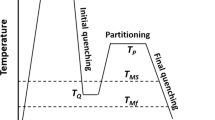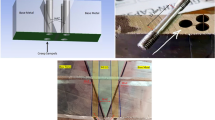Conclusions
-
1.
Samples of Kh18N9T, Kh18N12M2T, and Kh18N12M3T steels having residual tensile stresses after different technological operations are susceptible to transcrystalline corrosion cracking in media containing chlorine. They are also susceptible in a concentrated solution of sodium hydroxide at 200°C.
-
2.
Stabilizing annealing at 900–920°C for 1–2 h and cooling in air prevent corrosion cracking in boiling 42% MgCl2 solution and a concentrated sodium hydroxide solution at 200°C.
-
3.
Kh18N9T, Kh18N12M2T, and Kh18N12M3T steels cannot be used in media containing calcium and potassium chlorides and also potassium chlorate.
Similar content being viewed by others
Literature Cited
G. A. Nikolaev, Welded Structures [in Russian], Moscow, Mashgiz (1955).
G. A. Nikolaev and N. N. Prokhorov, Stresses During Welding [in Russian], Izd. AN SSSR (1948).
Additional information
Scientific Research Institute of Chemical Machine Construction Translated from Metallovedenie i Termicheskaya Obrabotka Metallov, No. 10, pp. 44–49, October, 1964
Rights and permissions
About this article
Cite this article
Akshentseva, A.P., Shvarts, G.L. & Krutikov, A.N. Heat treatment for prevention of corrosion cracking in austenitic steels. Met Sci Heat Treat 6, 626–629 (1964). https://doi.org/10.1007/BF00648704
Issue Date:
DOI: https://doi.org/10.1007/BF00648704




